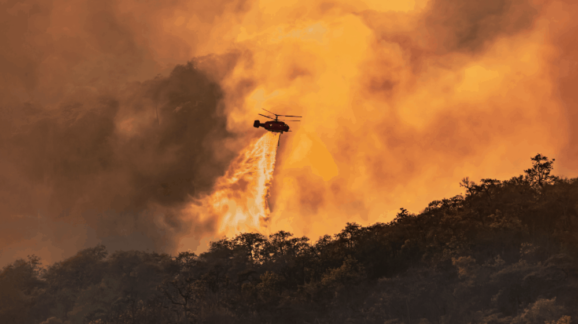Wildfires and the precautionary principle: Why being ‘safe’ isn’t always safer

Photo Credit: Getty
As wildfires rage across Los Angeles and devastate communities, the issue of wildfire management has never been more important. At the heart of this issue lies an uncomfortable truth: well-intentioned efforts to protect the environment through stringent regulations often backfire, increasing risks rather than reducing them. This is called a risk-risk tradeoff—where addressing one type of risk inadvertently exacerbates another.
Consider the precautionary principle, which advocates for erring on the side of caution in the face of scientific uncertainty. While this principle sounds reasonable, its application leads to unintended consequences.
One example comes from the Fukushima nuclear disaster. Fear of radiation exposure led to a mass evacuation, yet the chaos and stress of evacuation resulted in more fatalities than the radiation itself. This tragic example underscores how focusing exclusively on one risk can blind us to broader dangers.
The precautionary principle is also wreaking havoc in forest management policy. Federal laws like the Clean Air Act (CAA), National Environmental Policy Act (NEPA), and Endangered Species Act (ESA) have created significant barriers to prescribed burns and other proactive fire management practices. These laws treat fire restoration as a human activity that needs regulation to prevent environmental harm, rather than recognizing it as a natural and essential ecological process.
Prescribed burns are critical for reducing excess dead vegetation that fuels wildfires. However, well intended policies—such as extensive environmental reviews or air quality standards under the CAA—delay or discourage these practices.
For example, NEPA sometimes requires extensive Environmental Impact Statements, adding years of delay before prescribed burns can proceed. During this time, forests can accumulate dangerous levels of fuel, as seen in cases where wildfires broke out while NEPA litigation was still ongoing.
While taking time to consider how actions may impact the environment may seem like a prudent approach, the reality is delays lead to increased wildfire risks, as forests become increasingly overgrown. The result? Forests accumulate fuel over time, transforming what could have been manageable fires into catastrophic infernos.
Additionally, while emissions from wildfires often don’t count against air pollution limits under the CAA because they are considered “exceptional events,” those from prescribed burns do, creating a perverse incentive to avoid preventative measures that could reduce overall pollution and wildfire severity.
The wildfires in Los Angeles are a grim testament to the consequences of prioritizing short-term environmental protections over long-term risk reduction. By preventing smaller, controlled burns, policymakers have set the stage for uncontrollable megafires that release massive amounts of air pollution, destroy habitats and property, and threaten human lives.
Other examples of risk-risk tradeoffs abound. For example,stringent lockdown measures enacted during COVID-19 aimed at controlling the spread of the virus had negative consequences, including economic losses, but also mental health problems, lost schooling, and delayed medical care for non-COVID conditions.The regulation of certain chemicals like BPA can lead to the adoption of less-studied alternatives. These substitutes may pose greater risks to health and the environment, undermining the very goal of regulations.
To effectively manage wildfire risks, policymakers must consider tradeoffs. In practice, this involves streamlining environmental statutes like NEPA, the CAA, and the ESA to facilitate beneficial fire practices such as prescribed burns. By acknowledging tradeoffs and rethinking the precautionary principle, we can reduce wildfire risks and other unintended consequences of environmental policies.
The lesson to take away from the chaos in Los Angeles is that striving for a world free of risk is not only unrealistic but is also counterproductive. It’s time to move beyond “better safe than sorry.”